The advantages of metal silicon powder as a refractory material
![]()
Features of metal silicon powder:
1. High temperature resistance
Metal silicon powder has strong high temperature resistance, so adding an appropriate amount of metal silicon powder many times in the production of refractories and powder metallurgy can greatly improve the high temperature resistance.
2. Wear resistance
Usually we add metal silicon powder in the production of some wear-resistant castings to improve the wear-resistant performance of the castings.
3. Deoxygenation
Metal silicon powder, as the name suggests, contains a certain amount of silicon, which can have an affinity with oxygen to form silicon dioxide, which reduces the melting reactivity during deoxidation and ensures the safety of deoxidation!
In addition, metal silicon powder has also been widely used in the metallurgical foundry industry. In steelmaking, metal silicon powder can be used as deoxidizer, alloy additive, etc., and the effect is very obvious.
Silicon fume and metal silicon fume are two completely different products. In practice, these two products are often confused because they are inextricably linked.
The silica fume we usually say is also called silica fume and micro silica fume. It is the soot recovered from the production process of metal silicon or ferroalloy. Due to its high content of silica, extremely fine particles and high activity, it can be used in concrete, refractory materials, rubber, paint, etc. There are a wide range of applications in industries such as.
The main component of metal silicon powder is crystalline silicon (Si). Its initial form is lumpy, and it becomes powder after being crushed or ground, which is used in industries such as refractory materials.
The reason why metal silicon powder is turned into powder is because it is physically ground, and silicon powder is naturally formed during the production process.
The chemical composition varies greatly. Silicon powder is mainly silicon dioxide, and the main content of metal silicon is SI element.
Metallic silica fume is generally inert, while silica fume is a pozzolan. The color of metallic silicon powder is usually relatively stable, while the color of silicon powder varies greatly from white to black. Silica fume is widely used. The price of metal silica fume is very high, several times that of micro silica fume
The Progress of Superfine Pulverization Technology in Modern Food Processing
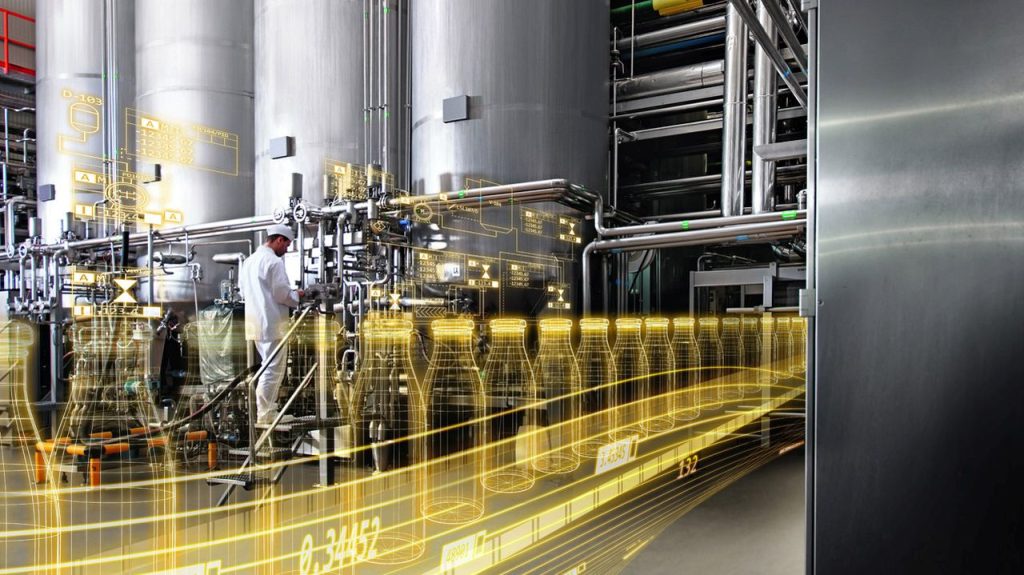
Superfine Grinding (SG) technology, as a new technology developed rapidly in the past 20 years, is a deep processing technology that combines mechanical mechanics and fluid mechanics, overcomes the internal cohesion of objects, and crushes materials into micron or even nanometer powders. Ultrafine pulverization treatment can make the material particle size reach 10 μm or even nanometer level. Since the powder structure and specific surface area are greatly changed compared with ordinary particles, the ultrafine pulverization particles have special properties that ordinary particles do not have, and with the modern equipment With the development of science, superfine pulverization technology has made major breakthroughs in many fields such as food and pharmaceuticals, especially in the extraction of Chinese herbal medicines, the development of functional foods, and the utilization of waste resources.
According to the particle size of processed finished powder, ultrafine pulverization technology can be mainly divided into: micron pulverization (1 μm ~ 100 μm), submicron pulverization (0.1 μm ~ 1.0 μm) and nano pulverization (1 nm ~ 100 μm). The preparation of micron powder generally adopts physical pulverization method; the preparation of submicron and below particle size powder adopts chemical synthesis method. The chemical synthesis method has the disadvantages of low output and high operation requirements, which makes the physical pulverization method more popular in the modern processing industry.
1. Extraction of natural active ingredients of precious Chinese herbal medicine
The demand for precious medicinal materials is high due to their remarkable medicinal effects, and wild resources are almost exhausted. Now they rely on artificial planting for supply, but the market is still in short supply, resulting in high prices. Therefore, it is necessary to make full use of precious Chinese herbal medicines and improve their processing technology.
Researchers generally use methods such as microscopic identification and physical property testing to perform characterization and physical property testing of ordinary Chinese herbal medicine powder and ultrafine powder. It was found that the ultrafine pulverization technology can effectively destroy the cell walls of a large number of cells in medicinal materials, increasing cell fragments, and its water solubility, swelling power, and bulk density are also improved to varying degrees compared with ordinary powder. At the same time, the dissolution rate of active ingredients in the ultrafine pulverization process is improved.
2. Reuse of food and drug processing waste resources
Food and drug processing waste usually still contains certain natural active ingredients, and discarding them will not only cause a lot of waste but also pollute the environment. The emergence of ultrafine pulverization technology provides more possibilities for the reuse of food and drug processing waste resources. In recent years, researchers' research on ultrafine pulverization technology has mostly focused on the reuse of food and drug processing waste resources, usually combined with enzymatic hydrolysis technology. For example, the reutilization of potato pomace, linseed husk, grape seed, coffee peel, etc., mostly focuses on the influence of different particle sizes on the physical and chemical properties and functional properties of ultrafine powders, as well as its influence on the relevant characteristics of food matrices.
3. Development and utilization of functional food processing
Because the cell structure of some raw materials rich in natural active ingredients is tough and not easy to be destroyed, the release rate of the nutrients and functional ingredients contained in them is usually at a low level, which cannot be fully developed and used. Ultrafine pulverization technology brings the possibility to destroy the cell structure and improve its nutrient release efficiency. Studies have shown that proper ultrafine pulverization can improve the hydration properties of raw materials, while excessive pulverization will reduce the hydration properties; at the same time, within an appropriate range, the dissolution rate of active ingredients will gradually increase with the decrease of particle size.
4. Other aspects
Research on ultrafine pulverization technology also focuses on the flavor components of spices, usually using low-temperature ultrafine pulverization technology. At present, some researchers have pretreated rattan pepper, dried pepper, and ginger through ultrafine pulverization technology, and studied their flavor. The research results show that the appropriate particle size will enhance the aroma of raw materials, and the aroma will not be lost in the later storage process; too small particle size will cause the aroma to lose faster with the prolongation of storage time.
Application of jet pulverization equipment in the production of titanium dioxide
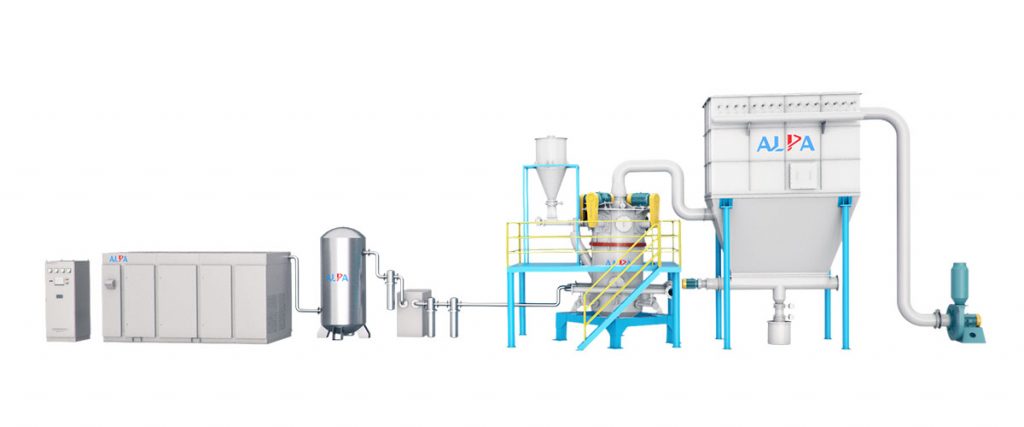
1. Titanium dioxide requirements for crushing
Titanium dioxide used as a pigment has excellent optical properties and stable chemical properties. Titanium dioxide has very high requirements on particle size, particle size distribution and purity. Generally, the particle size of titanium dioxide is based on the wavelength range of visible light, that is, 0.15m ~ 0.35m. And as a white basic pigment, it is very sensitive to the increase of impurities, especially iron impurities, and the increase is required to be less than 5 ppm when pulverized. In addition, titanium dioxide is also required to have good dispersibility in different coating systems. Therefore, the general mechanical crushing equipment is difficult to meet the requirements, so the final crushing of titanium dioxide (finished product crushing), at present, jet mills are used at home and abroad.
2. The choice of jet mill for titanium dioxide production
According to the crushing requirements of titanium dioxide: narrow particle size distribution, less increase in inclusions, good dispersibility, etc., and the material characteristics of titanium dioxide: high viscosity, poor fluidity, fine particle size and easy wall attachment, etc. The flat type (also known as horizontal disc type) jet mill with high-level function is used as the final crushing equipment for titanium dioxide;
And use superheated steam as the crushing medium. Because the steam is easy to get and cheap, the pressure of the steam working medium is much higher than that of the compressed air and it is also easy to increase, so the kinetic energy of the steam is larger than that of the compressed air. At the same time, the cleanliness of superheated steam is higher than that of compressed air, with low viscosity and no static electricity. Moreover, while crushing, it can eliminate the static electricity generated by material collision and friction, and reduce the secondary cohesion of powdered materials. In addition, crushing at high temperature can improve the application dispersibility of titanium dioxide and increase the fluidity of titanium dioxide. The energy consumption of superheated steam is low, which is only 30% to 65% of that of compressed air.
In addition, using a flat jet mill, organic additives can be added while pulverizing to organically modify the surface of titanium dioxide to increase the dispersibility of titanium dioxide in different application systems.
3. Factors affecting jet milling equipment
(1) Jet mill: As the most important equipment for jet milling, the quality of the jet mill directly determines the quality of the product. The gas powder machine is required to be reasonably designed, well-made, with high impact kinetic energy, good classification effect, wear resistance and high temperature resistance. Therefore, it is very important to choose a gas powder machine.
(2) Steam quality: The crushing medium of jet milling is superheated steam. If the steam quality does not meet the crushing requirements, it will seriously affect the quality of gas powder. Generally, the requirements for the steam of the gas powder machine are: the pressure is 1.6-2.0 MPa, and the temperature is between 290 ° C and 310 ° C. If the temperature and pressure are lower than the requirements, the impact kinetic energy will be low, the crushing force will be reduced, the heat of the system will not be enough, the material will be easily affected by moisture and many other unfavorable factors, which will affect the crushing effect, block the system, and make it unable to operate normally; if the temperature and pressure are too high, it will damage the damage to equipment within the system.
(3) Process control: Jet milling requires stable and continuous operation, and the fluctuation of steam and feed amount should be controlled within a certain range. The adjustment must be adjusted slowly, and it is strictly forbidden to be suddenly large or small. In addition, once the air-powder system is normal, it should keep running continuously, and avoid frequent driving and parking. Furthermore, the operating procedures should be strictly followed when driving and parking.
(4) System monitoring: In order to ensure the normal operation of the system, necessary monitoring equipment must be installed in a reasonable position of the system, so that timely adjustments can be made according to changes in the situation.
Application of Superfine Talc Powder in Coatings and Paints
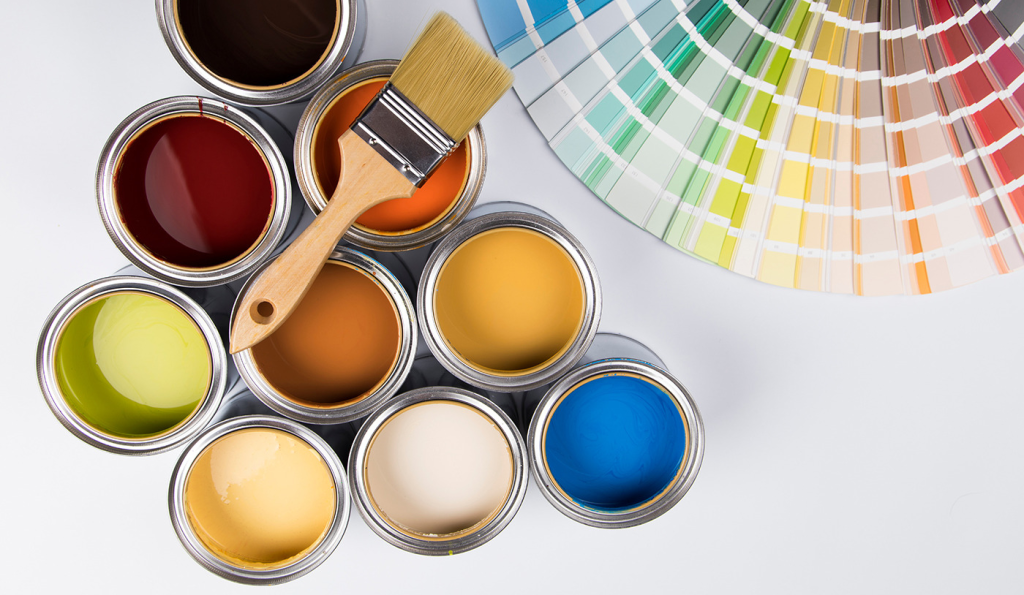
The nature of ultrafine talc powder is a natural hydrous magnesium silicate mineral. It is inert to most chemical reagents and does not decompose when in contact with acids. It is a poor conductor of electricity, low thermal conductivity and high thermal shock resistance. It does not decompose at a high temperature of 900°C. These excellent properties of talc make it a good filler, which can be used to fill plastics or be used as an excellent filler in paints and paints.
1. Talc powder and industrial coatings
The main advantages of coating talcum powder in coating applications are: high natural whiteness, generally do not need chemicals for bleaching, can improve whiteness, softness, smoothness, gloss, and can prepare high-solid content coatings.
Talc can be used in many industrial coatings, especially primers. Talc powder can be used in whole or in part for the steel structure primer, which can improve the precipitation of the paint, the mechanical force of the coating film and the recoatability. Talc is preferred for many manufactured and flash primers and vehicle paints. Sheet magnesium silicates, including talc, are suitable for use in metallic primers because of their ability to improve sanding and water resistance, which may arise from the fact that the flake particles extend the path of moisture through the film.
Because talc has excellent physical and chemical properties such as lubricity, anti-adhesion, flow aid, fire resistance, acid resistance, insulation, high melting point, chemical inactivity, good hiding power, softness, good gloss, and strong adsorption, it is widely used in The application in coatings is mainly reflected in: in coatings, talc powder is used as a filler, which can play a skeleton role, reduce manufacturing costs and improve the film hardness of coatings. It can mainly increase the stability of the product shape, increase the tensile strength, shear strength, bending strength, pressure strength, reduce deformation, elongation, thermal expansion coefficient, high whiteness, uniform particle size and strong dispersion.
As a filler of polyurethane waterproof coatings, talc powder can not only reduce the volume shrinkage of the coating during curing, improve the wear resistance and adhesion of the coating, reduce the cost, but also make the coating have good storage stability and heat resistance.
The influence of talcum powder as a filler on the elastic elongation and tensile strength of waterproof coatings shows a similar trend: that is, with the increase of fillers, the elastic elongation and tensile strength of waterproof coatings both increase first, and a maximum value, and then continue to decrease until an optimal value appears in the middle. Considering from the molecular point of view, when the amount of talcum powder is extremely small, the particles without talc powder will be dispersed in the middle of the macromolecular chain segments, so the attraction between the macromolecular chain segments cannot be reduced, and the macromolecular chain segments are very weak. Difficult to move, resulting in small elastic elongation of waterproof coating; with the increase of the amount of talcum powder, its small particles will continue to fill between the chain segments of macromolecules, the movement of the chain segments is strengthened, and the elastic elongation When the small inorganic particles of talcum powder just fill the gaps between the macromolecular chains, the defects in the curing system of the waterproof coating are the fewest, and the tensile strength and elongation of the waterproof coating reach an optimum. value; but too much filler will weaken the force between the macromolecules and reduce the cohesive energy of the waterproof coating, resulting in a decrease in tensile strength.
2. Application of talcum powder in latex paint
Latex paint is one of the essential paints in our lives. Now our country often uses latex paint in the decoration process. Good quality latex paint is very popular. And if you want latex paint to meet the high quality requirements, you must rely on the help of talcum powder.
Adding talcum powder to latex paint can increase the hardness of the paint, so that the difficulty of construction can be reduced when adding latex paint, so that the aesthetics of building construction can also be improved. Talc powder is an essential and important part of paint, and only the paint with talcum powder can have better corrosion resistance. But it should be noted that talcum powder is not added in unlimited quantities. If too much talcum powder is added to the latex paint, it will precipitate the latex paint and reduce the quality of the paint, and if it is used too little, it will affect the practicality and beauty of the latex paint.
In addition, when adding talcum powder, attention must also be paid to its adding temperature, otherwise it will also affect the quality of latex paint.
The difference between crystallization, fusion and spherical silica powder
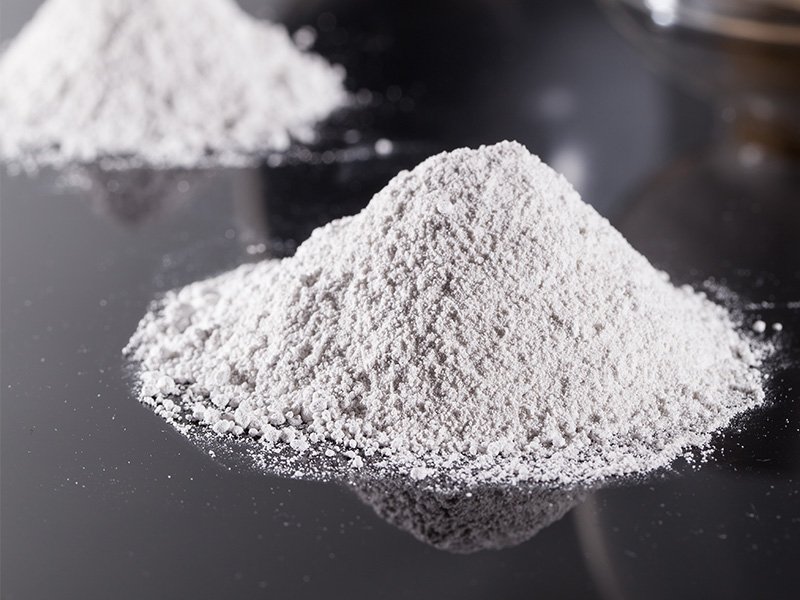
According to different classification standards, silicon powder is divided into different types, such as ordinary silicon powder, electrical grade silicon powder, electronic grade silicon powder, semiconductor grade silicon powder, etc. according to the use and purity, and can be divided into crystalline silicon powder according to the crystallization characteristics. Micropowder, fused silica powder, etc.; according to particle shape, it can be divided into angular silica powder, spherical silica powder, etc.
At present, the industry often uses two classification methods of crystallization characteristics and particle shape to classify related products. Angular silica powder can be divided into two categories: crystalline silica powder and fused silica powder, while spherical silica powder is further prepared on the basis of angular silica powder.
1. Crystalline silica powder: simple process and low cost
The main raw material of crystalline silica powder is selected high-quality quartz ore, which is a silica powder material processed through grinding, precision classification and impurity removal, which can improve the physical properties such as linear expansion coefficient and electrical properties of downstream products such as copper clad laminates. .
Its advantage lies in its early start, mature and simple process, low requirements for production hardware and relatively cheap price, and it has a great effect on improving the performance of copper clad laminates in terms of stiffness, thermal stability and water absorption. The main disadvantage is that the improvement of the resin system is not as good as that of spherical silica powder. The specific performance is that the dispersibility, sedimentation resistance and impact resistance are lower than that of spherical silica powder, and the thermal expansion coefficient is higher than that of spherical silica powder.
2. Fused silica powder: better performance, middle cost
The main raw material of fused silica powder is selected quartz with high-quality crystal structure, which is refined by acid leaching, water washing, air-drying, high-temperature melting, crushing, manual sorting, magnetic separation, ultra-fine crushing, grading and other processes. Micronized.
Compared with crystalline silica powder, fused silica powder has the advantages of lower density, hardness, dielectric constant, and thermal expansion coefficient. And other industries, its main disadvantages are the high melting temperature in the preparation process, complex process, although the dielectric constant is improved compared with crystalline silicon micropowder, it is still higher, and its production cost is higher than that of crystalline silicon micropowder.
3. Spherical silica powder: good performance and high cost
Spherical silicon micropowder means that the individual particles are spherical, a kind of high-strength, high-hardness, inert spherical particles, which are irregularly shaped and selected angular silicon micropowder particles are instantly melted at high temperature to make them spheroidized under the action of surface tension , and then processed by cooling, grading, mixing and other processes of silica powder. Spherical microsilica powder has good fluidity and a high filling amount in the resin. After being made into a plate, the internal stress is low, the size is stable, the thermal expansion coefficient is low, and it has a higher bulk density and a more uniform stress distribution. Therefore, it can increase the filler. fluidity and reduced viscosity.
In addition, spherical silica powder has a larger specific surface area than angular silica powder, which can significantly reduce the linear expansion coefficient of copper-clad laminates and epoxy molding compounds, improve the reliability of electronic products, and reduce the impact on equipment during the manufacture of related products. and mold wear. Its disadvantage is mainly that the preparation process is complicated and the cost is high.
The three microsilica powders have different application fields due to their different parameters. Generally speaking, the application fields are gradually becoming high-end in the order of crystalline silica powder, fused silica powder, and spherical silica powder. Crystalline silica powder is commonly used in electrical grade applications, such as copper clad laminates for home appliances, switches, wiring boards, chargers, etc.; fused silica powder is often used in electronic grade applications, such as copper clad laminates used in smartphones, tablet computers, and automobiles. Epoxy molding compounds, adhesives, etc. used in chip packaging; spherical silica powder is mainly used in the manufacture of epoxy molding compounds for high-end chips, and as fillers for copper clad laminates for high-frequency and high-speed circuits.
The difference between crystallization, fusion and spherical silica powder
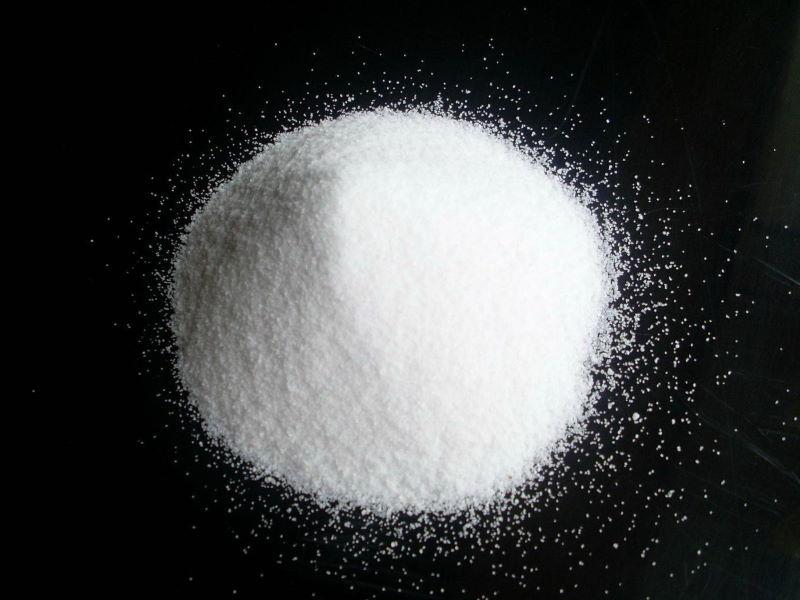
According to different classification standards, silicon powder is divided into different types, such as ordinary silicon powder, electrical grade silicon powder, electronic grade silicon powder, semiconductor grade silicon powder, etc. according to the use and purity, and can be divided into crystalline silicon powder according to the crystallization characteristics. Micropowder, fused silica powder, etc.; according to particle shape, it can be divided into angular silica powder, spherical silica powder, etc.
At present, the industry often adopts two classification methods of crystallization characteristics and particle shape to classify related products. Angular silica powder can be divided into two categories: crystalline silica powder and fused silica powder, while spherical silica powder is further prepared on the basis of angular silica powder.
1. Crystalline silica powder: simple process and low cost
The main raw material of crystalline silica powder is selected high-quality quartz ore, which is a silica powder material processed through grinding, precision classification and impurity removal, which can improve the physical properties such as linear expansion coefficient and electrical properties of downstream products such as copper clad laminates. .
Its advantage lies in its early start, mature and simple process, low requirements for production hardware and relatively cheap price, and it has a great effect on improving the performance of copper clad laminates in terms of stiffness, thermal stability and water absorption. The main disadvantage is that the improvement of the resin system is not as good as that of spherical silica powder. The specific performance is that the dispersibility, sedimentation resistance and impact resistance are lower than that of spherical silica powder, and the thermal expansion coefficient is higher than that of spherical silica powder.
2. Fused silica powder: better performance, middle cost
The main raw material of fused silica powder is selected quartz with high-quality crystal structure, which is refined by acid leaching, water washing, air-drying, high-temperature melting, crushing, manual sorting, magnetic separation, ultra-fine crushing, grading and other processes. Micronized.
Compared with crystalline silica powder, fused silica powder has the advantages of lower density, hardness, dielectric constant, and thermal expansion coefficient. And other industries, its main disadvantages are the high melting temperature in the preparation process, complex process, although the dielectric constant is improved compared with crystalline silicon micropowder, it is still higher, and its production cost is higher than that of crystalline silicon micropowder.
3. Spherical silica powder: good performance, high cost
Spherical silicon micropowder means that the individual particles are spherical, a kind of high-strength, high-hardness, inert spherical particles, which are irregularly shaped and selected angular silicon micropowder particles are instantly melted at high temperature to make them spheroidized under the action of surface tension , and then processed by cooling, grading, mixing and other processes of silica powder. Spherical microsilica powder has good fluidity and a high filling amount in the resin. After being made into a plate, the internal stress is low, the size is stable, the thermal expansion coefficient is low, and it has a higher bulk density and a more uniform stress distribution. Therefore, it can increase the filler. fluidity and reduced viscosity.
In addition, spherical silica powder has a larger specific surface area than angular silica powder, which can significantly reduce the linear expansion coefficient of copper-clad laminates and epoxy molding compounds, improve the reliability of electronic products, and reduce the impact on equipment during the manufacture of related products. and mold wear. Its disadvantage is mainly that the preparation process is complicated and the cost is high.
The three microsilica powders have different application fields due to their different parameters. Generally speaking, the application fields are gradually becoming high-end in the order of crystalline silica powder, fused silica powder, and spherical silica powder. Crystalline silica powder is commonly used in electrical grade applications, such as copper clad laminates for home appliances, switches, wiring boards, chargers, etc.; fused silica powder is often used in electronic grade applications, such as copper clad laminates used in smartphones, tablet computers, and automobiles. Epoxy molding compounds, adhesives, etc. used in chip packaging; spherical silica powder is mainly used in the manufacture of epoxy molding compounds for high-end chips, and as fillers for copper clad laminates for high-frequency and high-speed circuits.
Processing technology and requirements of quartz sand for plates
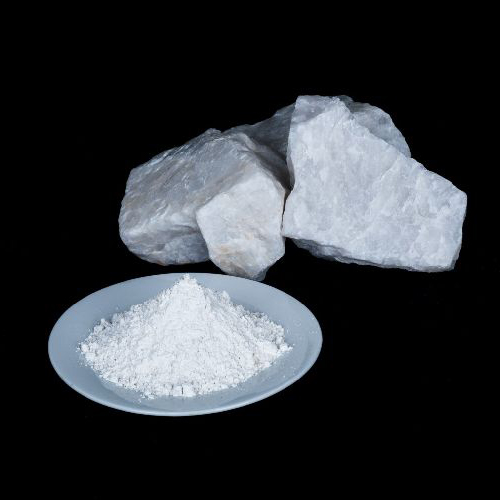
Artificial quartz stone is a kind of artificial stone, which refers to an artificial stone made of unsaturated polyester resin (UPR) as the binder, quartz sand and glass particles as the main aggregate, and quartz powder as the main filler. . Quartz stone inherits the advantages of hard texture, corrosion resistance and wear resistance of natural granite as well as exquisite color and high grade of natural marble.
The main aggregates and fillers in quartz stone slabs are quartz sand and quartz powder respectively. Except for a few high-end products with high whiteness and high transparency, the general requirements are relatively low, mainly for whiteness, transparency, impurities, and particle size. .
1. Quartz sand aggregate processing technology and index requirements
Quartz sand plays the role of aggregate in quartz stone slabs, and other aggregate raw materials include glass, metal, alumina or other minerals (such as granite).
According to the transparency of quartz sand, it can be divided into transparent sand, semi-permeable sand and ordinary sand. On some high-end panels, in order to pursue the three-dimensional layering of the pattern and texture and simulate the high-end pattern and texture of natural stone as much as possible, it is necessary to use quartz sand with high permeability. The higher the permeability of quartz sand, the less impurities, the higher the purity, and the higher the price.
In order to produce high-quality plates, it is necessary to use high-quality quartz sand as raw material. First, a good mineral source must be selected, and then the quartz ore should be washed, sorted and polished to remove miscellaneous stones, and then crushed or ball-milled and sieved to obtain the specified target. Number of pellets or powder. Extremely high-quality quartz ore can be broken directly without pickling to produce fine sand; however, there are fewer and fewer high-quality ore sources of this grade, and most quartz ore need pickling in the sand-making process to obtain high-quality plate sand: for large stones Carry out pickling, and then crush it into sand, with little acid residue, which has little effect on the performance of the later plate; after pickling the sand broken into fine particles, the residual acid must be removed, otherwise the quartz stone plate surface will have the problem of yellowing in the later stage .
2. Quartz powder filler processing technology and index requirements
Quartz powder is divided into ordinary quartz powder and modified quartz powder (that is, quartz powder treated with surfactant). Modified quartz powder improves the compatibility with resin and can reduce the amount of resin.
The surface modifier of quartz powder is mainly a silane coupling agent. There are three main methods of surface chemical modification: dry modification, wet modification and chemical coating modification: dry modification is to add a small amount of diluent and The treatment agent made of silane is added into the quartz powder in the form of spray under high-speed stirring, dispersion and certain temperature conditions, and the material is discharged after stirring for a certain period of time.
Wet modification is to use the prepared surface modifier and auxiliary agent to mix and prepare the treatment liquid, to modify the surface of the quartz sand powder under stirring dispersion and certain temperature conditions, and then dehydrate and dry.
Mechanical grinding and chemical coating modification refer to the addition of modifiers in the process of mechanical force or fine grinding and ultrafine grinding, and the surface modification of the particles is carried out as the particle size of the quartz sand powder decreases.
The current surface modification technology of quartz powder is seriously lagging behind the development of the quartz stone industry. A close relative of quartz stone—resin-type artificial granite, the filler used in it—calcium powder, the current surface modification technology has made great progress, and the oil absorption rate can be below 17%. In contrast, quartz powder, after modification The oil absorption rate of quartz powder hovers around 20% for a long time, which leads to high resin consumption and high cost of quartz stone plates, and has adverse effects on some properties of quartz stone finished products - expansion coefficient, hardness, etc.
The higher the whiteness of the quartz powder, the higher the price, and the produced quartz stone plate has high whiteness, high grade and high price. The higher the transparency of the quartz powder, the higher the price. The produced quartz slabs have a good texture and a strong three-dimensional effect, which can better simulate the texture of natural stone.
The commonly used quartz powder mesh numbers of plate manufacturers are: 100~200 mesh, 325 mesh (or 400 mesh), 800 mesh, 1250 mesh, etc.
Three types of surface modification methods for barite powder
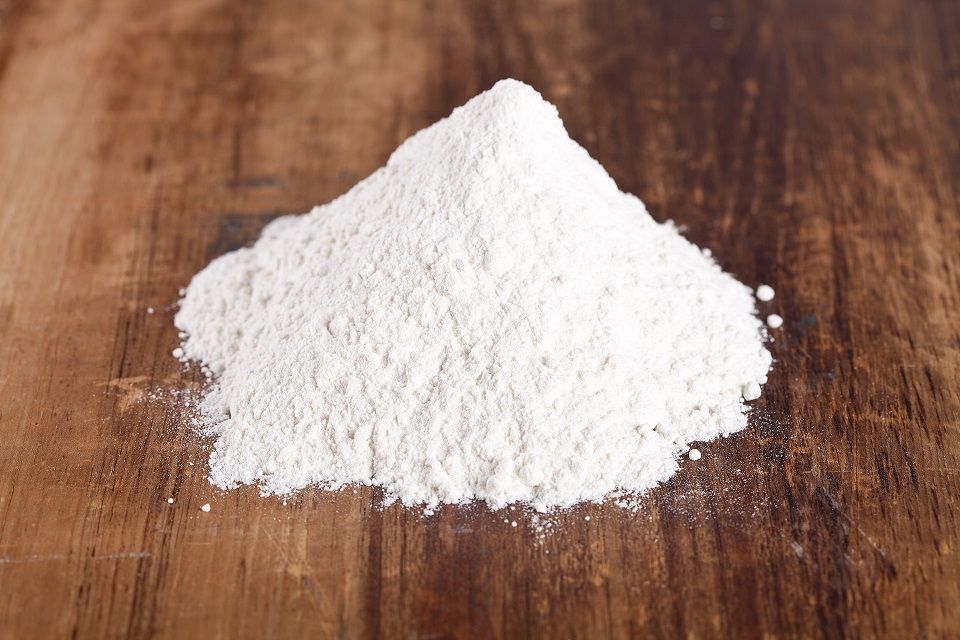
Barite is a sulfate mineral of orthorhombic (orthorhombic) crystal system, with relatively stable physical and chemical properties, insoluble in water and hydrochloric acid, high density, good filling, non-toxic, non-magnetic, easy to absorb radiation, good Optical performance and other advantages, it is an important inorganic chemical product, widely used in petrochemical, building materials, plastics, coatings, rubber, automobile brake pads and other industries.
At present, the most effective method is to modify the surface of barite, so that the modifier forms an adsorption layer or a monolayer film on the surface of barite, changes its surface characteristics, and improves its dispersion and compatibility with organic matter. Sex, expand its scope of application, and increase the added value of the product.
The surface modification of barite and its application as a filler have been extensively studied, but there are still two issues in the modification of barite that need to be further studied: one is the selection of suitable modification methods and new modification methods. The first is the development of permanent methods to meet the needs of different types of barite and their application objects; the second is the optimization of modifiers and the development of new modifiers to meet the needs of products with higher performance.
At present, the modification methods for barite mainly include surface chemical coating method, mechanochemical method, chemical deposition method and so on.
1. Surface chemical coating method
The surface chemical coating method is a method of uniformly and stably coating the modifier on the particle surface by chemical action, thereby changing the surface characteristics of the particle.
The mechanism of chemical coating modification on the surface of barite: the surface modifier is adsorbed on the surface of barite or reacts with the hydroxyl groups on the surface to form chemical bonds, so as to organically coat the barite, and use steric repulsion or electrostatic interaction Prevent the collision between particles and cause agglomeration, thereby improving the dispersion of barite.
2. Mechanochemical method
The mechanochemical method mainly uses mechanical force to activate the surface of the particle, and promotes the chemical reaction between the particle and the modifier to achieve the coating of the particle surface.
Mechanochemical modification mechanism of barite: it mainly uses ultra-fine pulverization and other strong mechanical force to activate the surface free energy of powder particles purposefully, so as to change the surface structure, structure and performance of powder, and produce lattice distortion And dislocations, enhance its reactivity with the modifier, greatly improve the powder activity and improve the uniformity of particle distribution and enhance the interface between it and the matrix.
The mechanochemical modification process is relatively simple, the production cost is low, and it has been widely used in practical applications. It is mainly suitable for barite with larger particles, but for nano-barite with smaller particles, a single mechanical Mechanochemical modification is not effective. Further improve the uniformity of the action of the powder and the modifier in the modification process and reduce the amount of the modifier, improve the coating effect by combining with other modification methods, introduce new modification equipment to simplify the process, reduce energy consumption, and improve The environmental protection of the modification process, such as: jet mill, honeycomb, will be the development direction of mechanochemical modification.
3. Chemical deposition method
The chemical deposition method is to add a modifier or a precipitant to carry out a precipitation reaction on the surface of the particle, and after washing, filtering, drying, roasting and other steps, a coating film is firmly formed on the surface of the particle, thereby improving the optical, electrical and magnetic properties of the particle. , heat and other properties.
The mechanism of barite chemical deposition method modification: mainly through the chemical reaction to deposit the modifier on the barite surface to form one or more coating layers, this coating treatment can reduce the surface activity of the particles and prevent them Agglomeration improves the dispersion and stability of barite in different media. This method is mainly suitable for the modification of inorganic surface modifiers, but the reaction process is not easy to control to obtain a uniform coating layer. Therefore, it is necessary to further explore the process conditions and the influencing mechanism that affect the deposition uniformity in the chemical deposition process, so as to improve the controllability of the process.
About Ultrafine Powder Classification Technology

Ultrafine powder is not only the basis for preparing structural materials, but also a material with special functions. field is required. With the application of ultra-fine powder in modern industry more and more widely, the position of powder classification technology in powder processing becomes more and more important.
1. The meaning of classification
In the pulverization process, only a part of the powder usually meets the particle size requirements. If the products that have reached the requirements are not separated in time, and then pulverized together with the products that do not meet the particle size requirements, it will cause energy waste and over-crushing of some products. .
In addition, after the particles are refined to a certain extent, the phenomenon of crushing and agglomeration will appear, and even the crushing process will deteriorate due to the larger particle agglomeration. For this reason, in the process of ultrafine powder preparation, it is necessary to classify the product. On the one hand, the particle size of the product is controlled to be within the required distribution range; Then crush to improve the crushing efficiency and reduce energy consumption.
With the improvement of the required powder fineness and the increase of output, the difficulty of classification technology is getting higher and higher. The problem of powder classification has become the key to restrict the development of powder technology, and it is one of the most important basic technologies in powder technology. one. Therefore, the research on ultrafine powder classification technology and equipment is very necessary.
2. The principle of classification
Classification in a broad sense is to divide the particles into several different parts by using the different characteristics of particle size, density, color, shape, chemical composition, magnetism, and radioactivity. Classification in a narrow sense is based on the fact that particles of different particle sizes are subjected to centrifugal force, gravity, inertial force, etc. in the medium (usually air and water), resulting in different motion trajectories, so as to realize the classification of particles of different particle sizes.
3. Classification of classifiers
According to the medium used, it can be divided into dry classification (the medium is air) and wet classification (the medium is water or other liquids). The characteristic of dry classification is that air is used as fluid, which is relatively cheap and convenient, but it has two disadvantages. One is that it is easy to cause air pollution, and the other is that the classification accuracy is not high. Wet classification uses liquid as the classification medium, and there are many post-processing problems, that is, the classified powder needs to be dehydrated, dried, dispersed, and waste water treatment, etc., but it has the characteristics of high classification accuracy and no explosive dust.
According to whether it has moving parts, it can be divided into two categories:
(1) Static classifier: There are no moving parts in the classifier, such as gravity classifier, inertia classifier, cyclone separator, spiral airflow classifier and jet classifier, etc. This type of classifier has a simple structure, does not require power, and has low operating costs. The operation and maintenance are more convenient, but the classification accuracy is not high, so it is not suitable for precision classification.
(2) Dynamic classifier: There are moving parts in the classifier, mainly referring to various turbine classifiers. This type of classifier is complex in structure, requires power, and consumes a lot of energy, but it has high classification accuracy and is easy to adjust the particle size of the classifier. As long as the rotation speed of the impeller is adjusted, the cutting particle size of the classifier can be changed, which is suitable for precision classification.
Application of active wollastonite powder

Active wollastonite powder is a white, fine, soft powder. The difference from ordinary wollastonite powder is that a layer of fatty acid soap is adsorbed on the surface of the particle, which makes it have colloidal activation performance, and its relative density is lower than that of ordinary wollastonite (approx. 2.3-2.5), the production process is basically the same as that of ordinary wollastonite powder, except that a surface treatment process is added.
Application range: Wollastonite powder after high temperature activation has a wide application range, and has been widely used in natural rubber, synthetic rubber, epoxy resin, phenolic resin, thermoplastic polyester, thermosetting polyester, polyolefin, polypropylene, polyethylene , polyvinyl chloride, unsaturated resin, leather, nylon, glass steel, ceramics, paint and coatings and other industries. Its body shape can replace harmful substances such as asbestos and glass fiber. It can replace some expensive titanium dioxide, and can replace 30% lithopone in paint. The advantage of activated wollastonite powder itself containing silicon dioxide can replace 50%-80% of white carbon black. Wollastonite has acicular shape and white glass luster and has been applied to various industrial fields. It has the reputation of industrial monosodium glutamate.
Active wollastonite powder is used in the rubber industry: firstly, it can reduce the production cost of the product and increase the bulk density; more importantly, it can improve the comprehensive performance of the product as a functional filler. Such as strengthening and reinforcing products; adjusting the fluidity of rubber and the plasticity of mixing, anti-shrinkage, surface properties, etc., can improve the chemical properties of rubber products, such as reducing permeability, changing interface reflection, water resistance and weather resistance, Fire retardant, oil resistant coloring and opacity. It can also improve the heat resistance and electrical insulation of the product. Increase the heat distortion temperature of the product; reduce the specific heat and increase the thermal conductivity. It can replace white carbon black, and the main properties of its products have been improved to varying degrees; such as hardness, elongation, breaking strength, permanent deformation and volume wear, etc. are superior to white carbon black. It has a very good reinforcing effect. Especially suitable for high wear-resistant products such as rubber shoes and tires.
Active wollastonite is used in some products of paints and coatings: it replaces part of lithopone and titanium dioxide to improve the fluidity of coatings. The particle shape of wollastonite is a good suspending agent for coatings. Enhancer for clean paints with high loading due to low oil absorption. The consumption of adhesive substances is reduced, so the cost of coatings is greatly reduced. The alkaline nature of wollastonite is very suitable for polyvinyl acetate coatings, so that the coloring can be evenly dispersed. It can connect pigments suitable for acidic media, and can also be made into bright colored coatings. The surface has uniform distribution and good spraying performance. As a filler; it can improve the corrosion resistance of the fresh coating. It is suitable for water-based coatings such as polyvinyl formal, and can also be used for low-grade paints, intermediate coatings, road marking coatings; sound-proof coatings; fire-resistant coatings, asphalt coatings can replace asbestos. Wollastonite powder can be used as a reinforcing agent in self-cleaning paint. It can be used in white alkyd enamel to replace part of titanium dioxide; wollastonite powder after silane surface treatment can be used in iron red epoxy ester primer and iron red alkyd primer to replace all talcum powder, precipitated barium sulfate and smelted zinc oxide .




